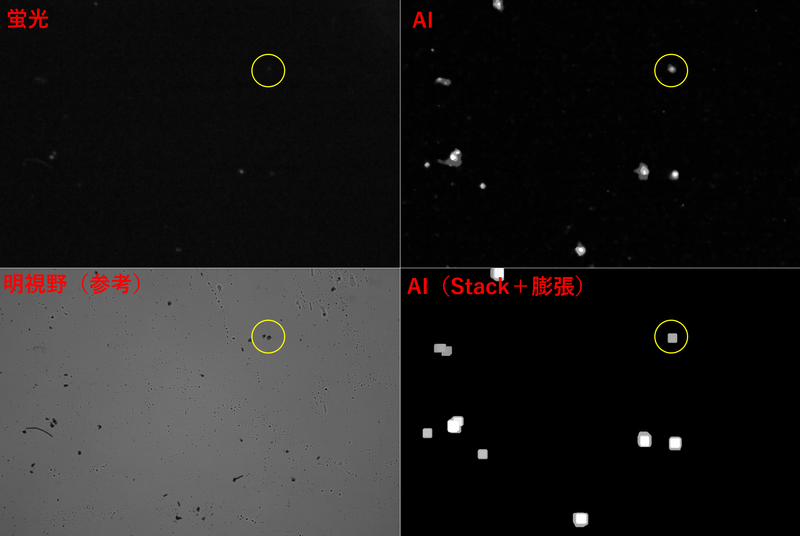Interviews

The AI Point-Detection System that Streamlines and Optimizes Imagery (Part 2)
Takuya Ikoma
Takuya Ikoma’s highly versatile “AI Point-Detection System" was finally selected for the INNO-vation Program.
Interviewer & Japanese Writer: Yamamoto Takaya; Translation & Editing: Matthew Cherry

Takuya Ikoma’s “AI Point-Detection System,” selected for the 2019 INNO-vation Program’s Disruptive Challenge, was an ambitious technology attempting to detect various hard-to-see points. Starting with detecting stars in the night sky, Ikoma would then try to adapt the technology for other uses, including point detection in microscopic and satellite images. However, these ideas were still just that: ideas. Whether or not they could be realized was a separate story. With the support of the INNO-vation Program at his side, Ikoma’s research was underway.
Within the medical field exists a technique called cell staining, which uses a special fluorescent dye to designate different parts of cells. Equipped with this knowledge, Ikoma set out to use his AI Point-Detection System, normally used for detecting stars in the night sky, to detect the light emitted from cells stained with the fluorescent dye.
“The system was originally designed for taking pictures of stars, so I knew it worked in that case, but it was still unknown if it could be used for other purposes. I was elated the first time the system was able to detect fluorescent cells under the microscope. That’s when I realized it could be used not only for stars, but for any other instance in which detection of hard-to-see points was required,” Ikoma said.
Of course, detection of fluorescent cells had been performed by other technologies in the past, but the microscopes in those instances would have to be used at very high magnification with a very narrow field of view, all while observing the cells by tracing their path. This means that viewing the entire image takes quite a long time, given that the viewing space must be continually shifted across several small areas. With Ikoma’s system, it’s possible to quickly view fluorescent cells across a wide area at low magnification, which allows for relatively speedy diagnostics and observation.

Points that are normally hard to see can be quickly observed and differentiated.
Ikoma’s challenge didn’t stop there. Since the AI Point-Detection System responds to the shape of points or dots, it could now be used in any application that required the detection of isolated points. To test it out, Ikoma ran a satellite image of the Japanese archipelago through his system, which then extracted a number of points. Combining the test with other relevant data, the system was able to successfully predict that the points at sea were fishing boats and the points inland were dams.
Ikoma expressed his hopes for the technology. “The light emitted from the ground captured by satellite imagery is similar to the light emitted from stars in astrophotography, which means this technology can be used to analyze images from satellites. Bearing this in mind, the applications for this particular system should be quite varied, so even I’m not quite sure about all of its possibilities, but I think it will be useful in three particular fields: medical, scientific, and engineering.”
In part 3, we’ll speak with Ikoma about his developments after the INNO-vation Program.
Takuya Ikoma’s Profile

